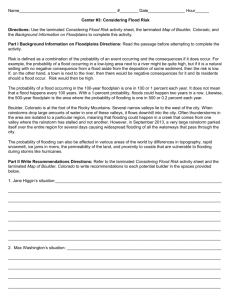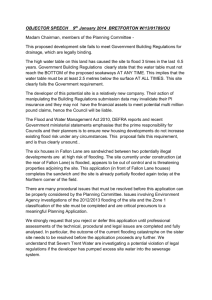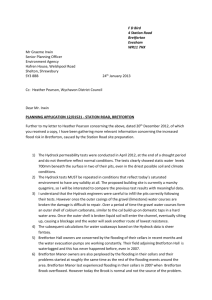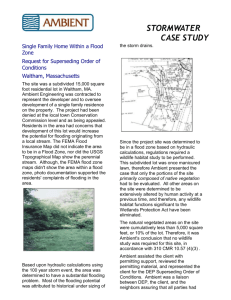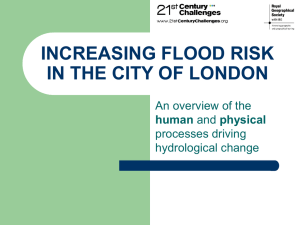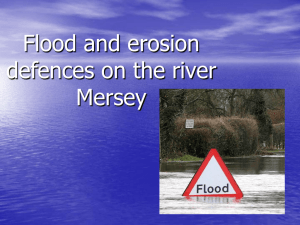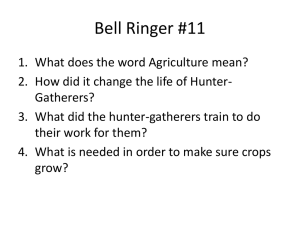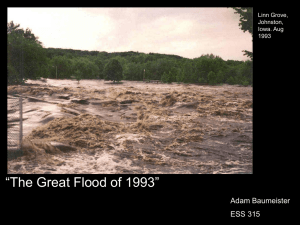Considering Flood Risk for Boulder, CO
advertisement
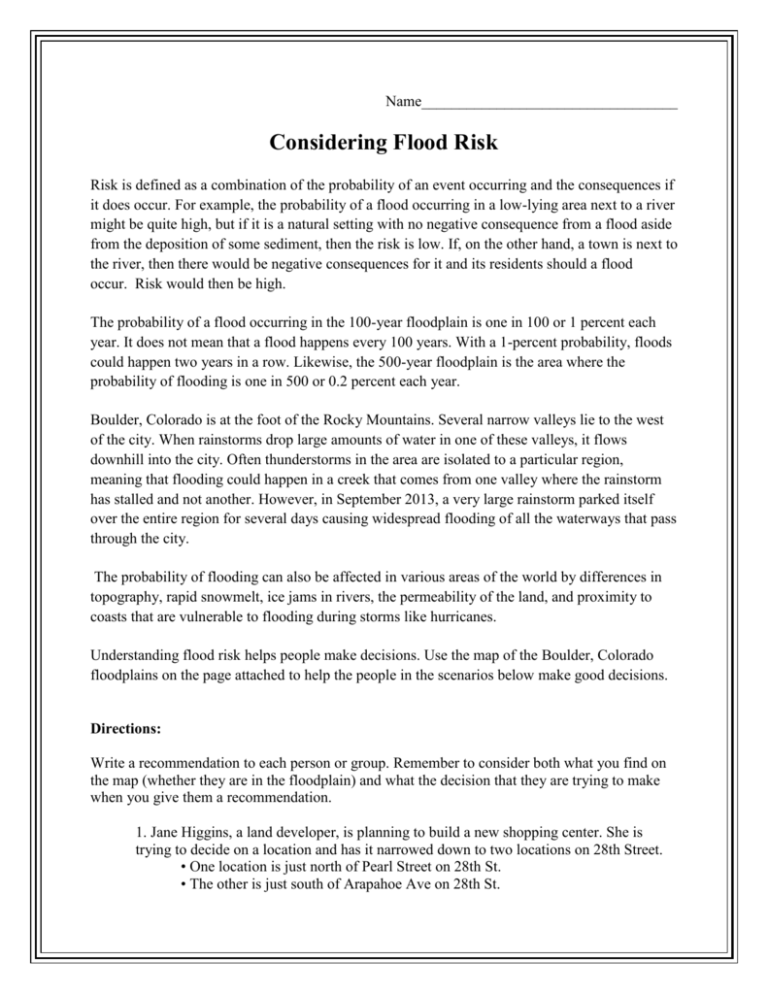
Name__________________________________ Considering Flood Risk Risk is defined as a combination of the probability of an event occurring and the consequences if it does occur. For example, the probability of a flood occurring in a low-lying area next to a river might be quite high, but if it is a natural setting with no negative consequence from a flood aside from the deposition of some sediment, then the risk is low. If, on the other hand, a town is next to the river, then there would be negative consequences for it and its residents should a flood occur. Risk would then be high. The probability of a flood occurring in the 100-year floodplain is one in 100 or 1 percent each year. It does not mean that a flood happens every 100 years. With a 1-percent probability, floods could happen two years in a row. Likewise, the 500-year floodplain is the area where the probability of flooding is one in 500 or 0.2 percent each year. Boulder, Colorado is at the foot of the Rocky Mountains. Several narrow valleys lie to the west of the city. When rainstorms drop large amounts of water in one of these valleys, it flows downhill into the city. Often thunderstorms in the area are isolated to a particular region, meaning that flooding could happen in a creek that comes from one valley where the rainstorm has stalled and not another. However, in September 2013, a very large rainstorm parked itself over the entire region for several days causing widespread flooding of all the waterways that pass through the city. The probability of flooding can also be affected in various areas of the world by differences in topography, rapid snowmelt, ice jams in rivers, the permeability of the land, and proximity to coasts that are vulnerable to flooding during storms like hurricanes. Understanding flood risk helps people make decisions. Use the map of the Boulder, Colorado floodplains on the page attached to help the people in the scenarios below make good decisions. Directions: Write a recommendation to each person or group. Remember to consider both what you find on the map (whether they are in the floodplain) and what the decision that they are trying to make when you give them a recommendation. 1. Jane Higgins, a land developer, is planning to build a new shopping center. She is trying to decide on a location and has it narrowed down to two locations on 28th Street. • One location is just north of Pearl Street on 28th St. • The other is just south of Arapahoe Ave on 28th St. She wants to know whether there is a risk of flooding at either location. Is one location more prone to flooding? If so, why? 2. Max Washington lives in a house just west of Boulder Reservoir. Because he can see the water in the reservoir from his living room windows, he is wondering whether buying flood insurance would be a good idea. What can you tell Max about the risk that his home could flood? 3. Juan and Marsha Martinez live near Four Mile Canyon Creek and Broadway. They are planning to renovate the basement to make a family room with carpet and couches and a big screen TV. Their basement flooded last year, so Marsha thinks it will be safe from floods for the next 99 years if it is in the floodplain. Do you agree with her? Why or why not? 4. Boulder Birders, a local birdwatching group, has always wanted to preserve natural land for a bird sanctuary. Thanks to a big donation, they are now able to buy land to make this dream a reality. They are looking at land that is for sale at south of Jay Road along Boulder Creek on the east side of town. One of the birders asked the rest of the group whether this land is at risk of flooding. Is the land at risk of flooding? And if so, how would this impact their project?

